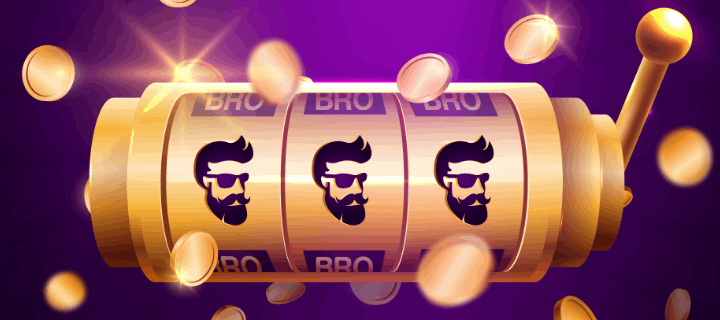5 Ways to Determine How Much to Invest in a Poker Game

It can be difficult to figure out how many huge blinds to buy into a cash game with. For over ten years, I’ve played every stack size imaginable and can assist you in making an informed decision.
With how much money should you enter a poker game? There are various elements to consider when selecting how much to buy into a poker game:
- Do you have a higher level of skill than your opponents? If that’s the case, go for a higher buy-in.
- What is the size of your bankroll? Choose a lesser buy-in if you have limited funds.
- Do you prefer pre-flop or post-flop poker? Buy-in for the bare minimum if you enjoy pre-flop betting. If post-flop maneuverability is important to you, go for the maximum.
- Do you prefer to play in tournaments or cash games? Shorter stacked play is usually beneficial for MTT players.
- Do you have a lot of free time to devote to your studies? Play a larger stack size if you have infinite time to progress.
Now that you’ve learned about some of the aspects to consider, let’s go over each one individually. Then I’ll offer you a quick quiz to help you figure out how much you should buy-in for your next cash game.
Must Read: What if Card Is Exposed
Assess your current skill level
It takes more expertise to win as the stack size climbs. This is due to the fact that there are more moving elements to consider. A small stack, for example, will largely be 3-bet pushing pre-flop and will not have to deal with intricate 3-bet pots after the flop.
As a result, while deciding on a buy-in size, you should honestly assess your abilities before deciding how much to contribute to the table.
I am a firm believer in gradual learning.
Forcing a rookie player to learn to play a 100 large blind stack right away, in my opinion, is like putting a small league baseball player up against a major league pitcher to teach him how to hit.
Why is learning to play poker treated any differently than learning to play any other game or sport? Beginner poker players, in my opinion, should begin by playing the simplest type of poker and then progressively master the complexities of deeper stacked play as they progress.
Playing the correct stack size is crucial for balancing the learning process and giving you the best chance to win as you learn. You’re probably ready to play an 80 large blind or higher stack if you’re already defeating 50NL or above with a reasonable win rate.
If you’re having difficulties beating 2NL or 5NL at the micros, though, learning the basics first and playing a modest stack will certainly yield better results in the long run.
The Effect of Bankroll on the Size of a Buy-In
When deciding on a buy-in level, consider how much discretionary income you have to devote to studying the game. If you can survive significant swings and reload, or if you don’t mind moving down, a larger buy-in size should be considered.
On the other hand, if you have limited resources for your biggest stake and want to reduce the likelihood of needing to go down and rebuild, go with a smaller stack.
If you’re rebuilding your bankroll right now, possibly because you just got back into poker after a long break, you might want to explore playing a short stack. When you play for a lesser bet, your bankroll needs are reduced, allowing you to play for a larger stake with a smaller bankroll. This will raise your hourly rate and expedite the construction process.
How Would You Describe Your Personality?
Everyone has their own distinct personality. Some people take their time in life and have a laid-back attitude toward all they undertake. These players are more patient and would benefit from a more methodical deeper stacked strategy.
You can be a hell-raiser who lives life in the fast lane on the other extreme of the spectrum. There is no such thing as too much activity, and he enjoys getting out there and taking risks. Action-junkies are often better off playing with a smaller stack, where they may move their chips around more frequently and see more exciting all-in situations.
This, I believe, is why so many players are unable to win at poker. They believe they are compelled to play a certain way because it is what they were advised to do on some forum or in a book. You must forge your own route, experiment, and determine the buy-in size that best suits your personality.
Do you prefer to play tournaments or cash games?
The format in which you learned to play poker might have a significant impact on your perception of the game. You probably know a lot about ICM if you learned it through tournaments. You’re used to moving a large number of chips around before the flop and have learned to embrace the risk of pre-flop all-ins.
If you got your start in poker by playing 100 large blind stacks in cash games, you definitely have a very different perspective on the game. You’re probably more like a chess player, strategizing against opponents to exploit every flaw they have.
Here are some things to think about when deciding on a buy-in size:
If you like to play tournaments, consider the stack size with which you are most comfortable during an MTT event. That is most likely the optimal buy-in size for a cash game.
If you specialize in cash games, be honest with yourself about your strengths. If you excel as your stack grows to 150, 200, or 250 large blinds, opt for the most expensive buy-in. If you’ve been unable to win for years and are afraid of playing bigger stacks, try learning 30-40 big blind play for a bit.
The Buy-In Level Should Be Proportionate to the Level of Commitment
When selecting how much to buy-in for at the poker table, the amount of time you have to study poker should be factored into the equation.
To master all of the intricacies of deep-stacked play, you’ll need a lot of continuous studies. There are so many viable post-flop lines and modifications to make that staying current with a fast growing game necessitates a daily commitment to studying.
If you don’t have a lot of time to devote to learning and self-reflection, you’re setting yourself up for failure if you try to compete with full-time poker pros who have an unlimited amount of time to outwork you.
Must Read: Books To Learn Poker
Short or mid-stacking requires skill as well, but it’s a different kind of skill
That isn’t to argue that a short- or mid-stack method isn’t time-consuming. It’s just a different kind of labour in that a lot of the tactical issues are simpler and based on actionable math.
The +EV 4-bet re-shoving range versus a 15% 3-bet, for example, is pretty set in stone. It’s not like the math is going to change. Only your opponents’ readjusting is anything to be concerned about.
Make sure your chosen buy-in is appropriate for the amount of time you have available to study
If you have the time and energy, and you want to increase your win rate, you should probably work your way up to the point where you can play deep-stacked. If he had the time to spend, a 6bb/100 40 large blind winner could definitely be an 8bb/100 100 big blind winner.
Personally, I have a day job and a family, so I don’t have a lot of time to devote to poker studies. I’d have no time to play if I spent all of my “poker time” studying to become a 100bb player. As a result, I’ve always been a CAP stack 30-40 huge blind player who accepts the constraints.
Take the Buy-in Assessment Quiz to find out if you’re ready to buy
Here’s a quick 8-question quiz to help you figure out how big of a stack you should buy in with:
- Have you made any money playing poker in the last six months? Give yourself two points if you answered yes. Take 0 points if no (there’s nothing wrong with that). Take 1 point if you broke even.
- What is the highest stake you can win in a cash game? Take only one stake at a time. Give yourself 1 total point if you can beat 2NL, 1.5 points if you can beat 10NL, 2 points if you can beat 25NL, 3 points if you can beat 50NL, and 4 points if you can beat 100NL or higher. Take 0 points if you haven’t beaten any stake. Note: When I say “beat,” I’m referring to a sample size of at least 50k hands.
- In the games you frequently play, are you usually the best two players at the table, the poorest two, or somewhere in the middle?
- Give yourself 3 points if you’re the best, 2 points if you’re in the center, and 0 points if you’re the worst. To assist you in making your decision, if you do not have an imminent plan to exploit 3-4 players at a table, you are not one of the top two players.
- Do you have a lot of money to study and play poker with? Take 2 points if your largest stake has more than 50 buy-ins or if you can simply reload if you go busto. Take 1 point if you have 30-49 buyins or don’t mind shifting down during a swing. Take 0 points if you have less than 50 buy-ins and no backup.
- What personality type do you belong to? Give yourself four points if you are a laid-back, easygoing person. Give yourself 0 marks if you are a high-strung action junkie. If you’re in the middle, you get two points.
- Which tempo do you favour when playing tournaments? Take 4 points if you like slow tournaments, 3 points if you prefer standard tournaments, 1 point if you prefer turbos, and 0 points if you prefer hyper turbos.
- How much time should you spend playing poker? Give yourself one point for every half hour you can devote to everyday study. Take 0 points if you can’t devote at least 3.5 hours per week to studying.
Now tally up your total points to determine the size of the stack you should be playing while learning.
- 0-12 Points – Buy-in for 30 or 40 big blinds
- 12-14 Points – Buy-in for 50-60 big blinds
- 14-16 Points – Buy-in for 70-80 big blinds
- 16+ Points – Buy-in for the maximum allowed
There is considerable overlap between the tiers, as you can see. This is a matter of personal taste. For example, let’s say you have 12 points and can’t bear the thought of playing with less than 50 big blinds. You should buy in for 50-60bbs in such a situation.
Why Does Each Buy-In Level Have a Different Strategy?
Let’s look at why the strategies will differ depending on the size of the starting stack. On the flip, your level of commitment will be the most important aspect in determining your basic approach.
SPR Considerations When Evaluating Commit Based on Stack Size
The profitability of stacking off on the flop with varied holdings versus specific players is referred to as stack-to-pot ratios, or SPR. It is commonly stated as a number between 1 and 20. To calculate your SPR, divide the current pot size by the effective stack. The smaller your SPR, the more you can potentially stack off on the flip.
In general, SPR is divided into three “levels”:
- 1-5 SPR – With a low SPR, you are almost always happy to get the money in with any 8 out draw, top pair hand, or better.
- 6-9 SPR – With a medium SPR, you usually need to be beating top pair to profitably stack off. This includes having an overpair or better.
- 10+ SPR – A greater than 10 SPR usually means you need a really strong hand to stack off, think two-pair, trips, or better. This is the pot control range of SPR when you have top pair and even overpairs.
When stacking off versus looser opponents, you can err on the side of greater SPRs, however when stacking off against particularly tight players, you’ll need to fudge the numbers down. The top pair might be a slam dunk all-in versus a lunatic with an 8 SPR or down, but you’d need a 2 or lower against a low VPIP rock.
The idea of bringing this up is that when you buy in with a smaller stack, it’s easier to create low SPR circumstances. Based on effective stack size after a regular 2.5bb raise and call with a pot of 6 large blinds, here are a couple SPRs:
- 100bb – 16.3 SPR
- 80bb – 12.9 SPR
- 60bb -9.6 SPR
- 30bb – 4.6 SPR
So now you can see how stack size affects the post-flop skill required. Because of the intricacies of post-flop play, higher SPR situations require a lot more nuance and knowledge.
Even yet, when playing a lesser stack, you don’t give a break on learning new stuff. When playing a low stack, you still need a thorough mathematical grasp of pre-flop shove-call dynamics.
When Should You Leave a Table?
When playing a small or medium stack, you might be wondering what to do if your stack size grows. My recommendation is to abandon a table after your stack has grown to 20 big blinds above your buy-in level.
You’re buying in less than full because you want to play a specific approach. When you’re in an unpleasant situation, why stay on a table? That only serves to strengthen your opponent’s hand. Make them play according to your rules.
Adjustments to the Buy-In Level and SPR in Live Cash Games
The minimum buy-in varies greatly from casino to casino. Even so, if you’re a live player, I still recommend employing this buy-in technique.
The only change I would suggest is not to leave a table right away if you win a huge pot or double up early in the game. If you do that, you will receive a lot of backlash from everyone. Instead, keep it tight for another 30 minutes and then get up and depart quietly. Take a quick rest before returning to the waitlist.
Also, keep in mind that games in casinos are frequently significantly looser than games played online. As a result, in terms of SPR, I would fudge both my buy-in criteria and my stack off ranges. You’ll be alright if you add 10 large blinds to my recommended buy-in levels.
So, if you regularly buy in for 50 big blinds online, in a live game, just sit down with 60 big blinds. In addition, if you routinely stack off with top pair at 5 big blinds in an online game, you can usually do so at about 7 or 8 large blinds in a vacuum.
When making these adjustments, remember to utilize common sense.
Last Thoughts
I hope this post has helped you figure out how much to put down at the poker table. One thing I’d like to add is to keep an open mind and ignore any static you might hear on some poker forums, articles, or books you read.
There has been a lot of vitriol aimed at players who buy-in for less than the maximum amount. This is usually due to their dislike of short stackers and their learning process’ indoctrination of what is the “correct” way to play.
Even if you never play that way, every single poker player should learn to play every stack size level if they want to be a full player.
When you regard your buy-in as a tool to maximize your earnings and poker knowledge, it only makes sense to explore all of your possibilities.
By the way, on my website, I teach people how to play short to mid range stacks. Please visit my home page for more information. Signing up for my newsletter will also get you a free basic strategy.
Related Questions
To play poker at a casino, how much money do you need?
The amount you’ll need to carry to a casino will depend on your buy-in level as well as any stop-losses you’ve specified. Start with three to four buy-ins and work your way up from there.
When is it appropriate to quit a poker table?
The profitability of remaining at a poker table should be the primary element in determining when you should depart. If you ever feel like you won’t be able to win at a poker table, you should leave right away.
What is a solid cash game poker bankroll management strategy?
Before you move up to a new stake, you should have at least 30 buy-ins, according to conventional thinking. If you merely play for fun and can quickly replenish your bankroll, this number can be lowered lower. If you play poker as a serious amateur or professional, on the other hand, you will need a significantly larger bankroll. For a recreational player, 10-20 buy-ins would be common, while for a pro, 50 buy-ins would be the minimum allowed level.





